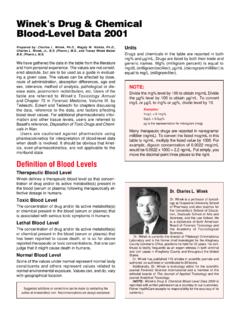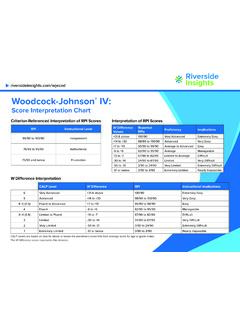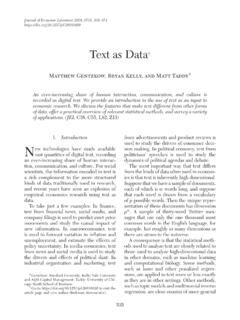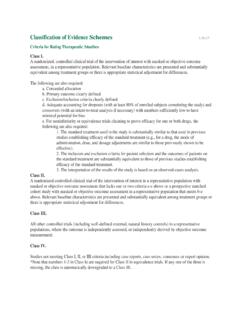Transcription of Executive Functioning: Advanced Assessment and …
1 Executive Functioning: Advanced Assessment and Interpretation Scott Crooks, NCSP, Julie Hylton, Nathan T. Dickerson, Elissa Clair, NCSP, Joanna M. Sinha, , Presenters Agenda Executive Functioning Red Flags Assessments Executive Functions How To oWhat it is oWhat it looks like oWhat measures it oWhat an intervention might be oSMART goal sample Questions on parking lot, future directions Outcomes and material availability The outcome will be to increase knowledge of available tools to assess Executive functioning and how to effectively respond to identified deficits Materials will be available at: Executive Functioning Many models No agreed upon definition Lots of debate about their structure The more we study how the brain.
2 The more complicated it gets Important to remember Executive Functioning skills develop through early childhood into adulthood The skills we expect change as a child ages (test reflect that) Dysfunction can be addressed and these capabilities continue to develop as children age It's important Visible Learning (2009, ) oMetacognitive strategies are ranked #13 overall on influences of student achievement oRanked #8 out of the teaching domain (so within what teachers can control). oEffect size of d= (anything > is considered significant; anything or > is the equivalent to an increase of a grade level or more in achievement Red Flags Things heard in a RtI, Care Team, or RED meeting that should make you think of EF dysfunction Red Flags Not knowing how or when to start a project or assignment Not using a checklist or planner to keep track of assignments, even when one is available Taking a long time to make a transition Number of reminders necessary from teacher or peers to make a transition Making careless errors Red Flags Inability to follow a conversation, keep track of details Difficulty completing multi-step instructions without reminders Trouble waiting in line.)
3 Waiting his or her turn Ignoring distractions or being side-tracked by distractions during instruction Not reading directions before beginning task Red Flags Giving the same answer to different questions, says the same thing repeatedly Not realizing how long they ve been off-task Loses materials, homework Low frustration tolerance Shutting down/melting down Reacting more strongly to situations than peers Assessment Tools Rating scales, pre-referral screening questions - Nathan Observation and Interview - Joanna WISC integrated Julie D-KEFS Elissa NEPSY- Scott Pre-Referral Screening Task-Related Behaviors Screening Form Similar format to the Home/Adaptive Behaviors Checklist in the SSD Initial Referral Packet ( no concern , some concern , great concern ) Based on a discussion about Executive Functioning by the 2011-12 SSD School Psych Cohort Connects specific behaviors to areas of Executive Functioning Pre-Referral Screening (cont )
4 Checklist For Intervention For Individuals With Executive System Impairment and Organizational Impairment General Considerations Appropriateness Level of Development & Level of Recovery Self-Awareness of Strengths and Needs Goal Setting Planning & Organizing Self-Initiating Self-Inhibiting Self-Monitoring and Evaluating Problem Solving & Strategic Thinking Pre-Referral Screening (cont ) AIMsWeb Behavior Measures Prosocial Scale (SSIS-P) Communication or cooperation skills (Functional Communication) Initiating and sustaining conversations / interactions in an age-appropriate manner (Attention / Hyperactivity) Self-control (Impulsivity / Inhibition) Concern for others (Monitor) Motivation Scale (SSIS-M) Engagement in instructional activities (Initiate / Monitor) Staying on task to complete an activity (Monitor / Attention) Effort when confronted with difficult work (Inhibition / Emotional Control) Attentiveness (Attention) Pre-Referral Screening (cont ) AIMsWeb Behavior Measures (cont ) BESS-T & BESS-S Attention (Attention / Working Memory) Organization (Planning & Organizing / Organization of Materials) Assignments done incorrectly b/c not follow instructions (Attention / Monitor) Distractability (Attention) Study habits (Planning & Organizing / Monitor) Trouble sitting still (Hyperactivity) Rating Scales Behavior Rating Inventory of Executive Function (BRIEF)
5 Meta- Cognition Behavioral Regulation Working Memory Initiate Plan/Organize Inhibit Shift Emotional Control Monitor Organization of Materials BRIEF Rating Scales (cont ) Rating Scales (cont ) Behavior Assessment System for Children Second Edition (BASC-2) Rating Scales (cont ) BASC-2 TRS/PRS/SRP Externalizing Problems Scales Hyperactivity TRS/PRS/SRP School Problems Scales Attention TRS/PRS Adaptive Skills Scales Adaptability & Functional Communication TRS/PRS Content Scales Emotional Self-Control & Executive Functioning Negative Emotionality & Resiliency Rating Scales (cont ) Conners Third Edition (Conners 3) Rating Scales (cont ) Conners 3 P/T/SR Scales Inattention Hyperactivity/Impulsivity P/T Scales Executive Functioning Rating Scales Strengths and Weaknesses Rating Scale Ages Admin Time Parent Form Teacher Form Self-Report Form Consistency Index/ Inconsistency Scale F Index/ Negativity Scale/ Negative Impression L Index/ Positivity Scale/ Positive Impression V Index Response Pattern Index Internal Consistency Test-Retest Reliability Inter-Rater Reliability BRIEF 5-18 yrs 10-15 min Y Y Y Y Y N N N.
6 82 (P) & .88 (T) .30 (P-T) & .50 (S-P) & .25 (S-T) BASC 2 2-21:11 yrs 10-30 min Y Y Y Y Y Y Y Y Attention Problems: Hyperactivity: Adaptive Skills (P) & Attention Problems: Hyperactivity: Adaptive Skills: (T) Attention Problems: Hyperactivity: Adaptive Skills: (P) & Attention Problems: Hyperactivity: Adaptive Skills: Individual Scales: .70s (P) & Individual Scales:.53 to .65 (T) Conners 3 6-18 yrs 10-20 min Y Y Y Y Y Y N N .77 to .97 .71 to .98 .52 to .94 Strengths: Integrative approach to the Assessment of children, adolescents, and young adults across multiple informants Easy to administer and score Can be filled out in a short amount of time Generate a comprehensive portrayal of both the child s strengths and weaknesses Include a variety of validity indices Weaknesses.
7 Measure a limited number of psychopathology, behavioral, and personality domains Structure sometimes makes comparison of child self-ratings from parents and teachers difficult Must be somewhat familiar with student ( at least one month) Questions sometimes require clarification or to be read aloud to informants Rating Scales Strengths and Weaknesses (cont ) Observations & Interviews McCloskey Book Have you checked the modules on the CD? observation tools parent interview child interview handouts Who at SSD has this book? Allen, Ayanaw, Boeckmann, Bretz, Burton, Crooks, Crowe, Dolosic, Dorton, , Emery, Engel, Foutch, Gaeta, Giger, Grace, Guzy, Haley, Hanna, Hartz, Hemmersmeier, Henkelman, Kosta, , Larson, Maggard, Moritz, Morrill, Porter, Price, Reed, Ronzio, Ross, Schieffer, Schneider, Schuh, Sinha, Stewart, Taylor, Traughber, Velk, White, Yates OBSERVATION Classroom Observations Observe student s Executive functions Observe the external supports in the environment oClassroom or Lesson structure/organization oVisual reminders of rules/routines/expectations oTeacher cues - verbal, physical, visual oPeer cues - helpful?
8 OBSERVATION Testing Observations (create your own code) Repetition of test items/instructions (R) Inattention/daydreaming (InAtt) Off-topic conversation (OffTop) Response to redirection (+ or - to Redirect) Impulsive responding (Imp) Difficulty shifting between subtests (Shift) Excessive motor movement (M) Self-corrections (SC) INTERVIEW with STUDENT Determine a loose structure oMcCloskey: Executive Functions oSinha: Math, Read, Write, Relationships/conflicts at Home, Relationships/conflicts at School Conversation-style vs. Structured interview Note their EF behaviors during interview Process-oriented questions: many students have never done this before READING: Tell me about the last book that you read.
9 Possible question probes: How did you choose it? What did you like about that book? Is there a place at school or at home that you like to read? Do you get distracted when you read? By what? Do you find yourself reading a page and then having to re-read that page? Tell me about what is happening for you when you read. Does your mind wander to other topics, which topics? Do you find it is difficult to sit still for an extended period of time? Do others/sounds/sights distract you when you are reading? Do you remember what you have read? Which do you prefer and why: reading silently or outloud? Do you use any strategies to help you remember what you have read? Sometimes when reading there are words that you might not know, what do you do when that happens?
10 What helps you figure out what the main point of the passage is? How do you manage your time when you are given a long reading assignment? Has a teacher ever done something that helped you with reading? WISC-IV INTEGRATED Process Approach Data from ADHD, AU and TBI groups Correlational studies with D-KEFS VCI Comprehension and Comprehension Multiple Choice pulls for impulsive responding Similarities and Similarities Multiple Choice pulls for impulsive responding Picture Vocabulary Multiple Choice pulls for impulsive responding. PRI Elithorn Maze designed to measure Executive function. Sensitive to moderate to severe but not mild Executive functioning deficits. Requires planning, self-monitoring and inhibitory control.




